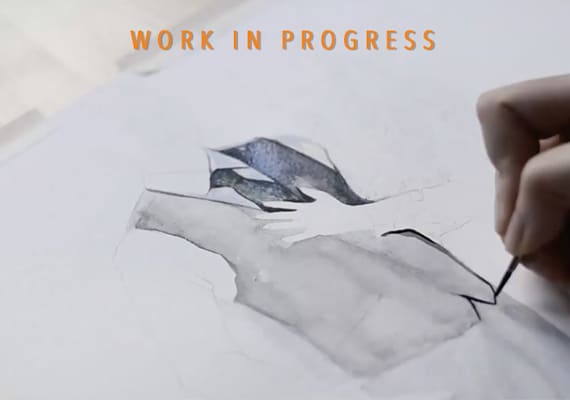
Watercolour
Watercolour paint consists of fine pigment particles suspended in a water-soluble binder (adhesive substance). It is usually used on paper. As watercolour is semi-transparent, the white of the paper gives a natural luminosity to the washes of colour. White areas of the image often are merely left unpainted to expose the paper. Watercolours are sold as cakes of dry paint or as liquid in tubes, to which water is added. The paint can be applied in various techniques such as wet-on-wet and wet-on-dry to obtain different effects.
The paint can be applied in various techniques such as wet-on-wet and wet-on-dry to obtain different effects.The paint can be applied in various techniques such as wet-on-wet and wet-on-dry to obtain different effects.
The binder usually used for watercolour consists of gum, glucose, glycerine and wetting agents. In ‘pure’ watercolour painting, (sometimes called the ‘English Method’) no white is used.


Description & Process
There are a couple of basic ways I paint with watercolour. The wet-on-wet method is typically used for painting landscapes, simple skies, or soft watercolour washes because the effect gives us a nice flowy look that can be applied in different ways. Basically, I’m adding wet paint to a wet surface. Then there is Wet-on-Dry to used to achieve more precise and defined shapes which i use in my more detail work for portraits or Head to Toe figures. This is the technique I like most, and, in general, most illustration-style watercolours are achieved using wet paint over a dry area.
Results
If you were to ask me to describe what I love to do, it would be “a combination of high detailing, contemporary, postmodern art” . But what’s more important to me is that you’ll hopefully ask me to create a piece artwork that will be in pride of place in your home for years to come “that just amazes me” If you like one of your very own, or want to give one as a gift for that special person on their special day, just let me know by dropping me a line! contact me.
